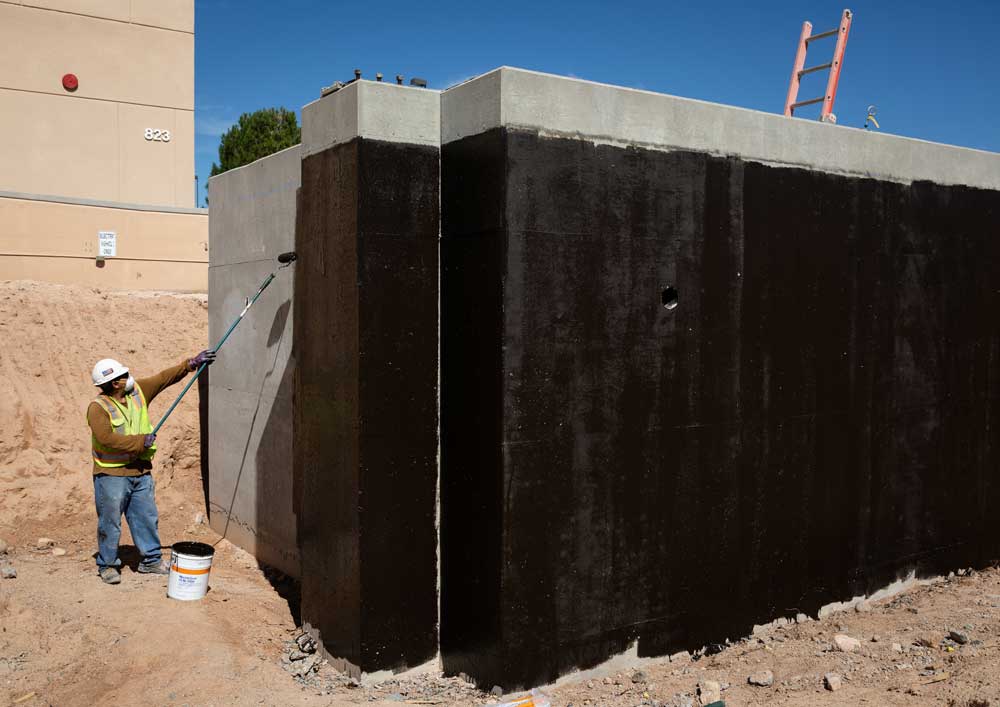Labs decreases energy usage, increases efficiency on-site

While Sandia is known for research that helps communities become more energy efficient and the nation address climate and energy security, the Labs is also focused on decreasing its own energy usage for the same reasons and in response to new federal requirements for sustainability aimed at addressing the climate crisis.
Sandia New Mexico and California use enough electricity annually to power 40,000 houses for a year.
“To put that into perspective, the electricity consumption at Sandia is higher than the local government in Michigan that I worked with on a previous project,” said energy engineer Joao Oliveira, who specializes in energy data management.
The challenge is that many buildings on Sandia campuses are older, built before sustainable practices were a major part of design and construction. It would be cost- and mission-prohibitive to tear down every energy-inefficient building and start over, Joao said. As an alternative solution, Sandia is working toward retrofitting some of these older buildings to make them more energy efficient.
Joao is one member of Sandia’s cross-department energy management team. Led by manager Robin Jones, the team investigates and identifies ways to make site-sustainability initiatives happen.
Renegotiation of Sandia’s utility contract was one successful step toward making these goals a reality. The renegotiation has provided the Labs with $2.3 million in avoided costs to fund energy-efficiency projects this fiscal year. Further savings from reductions in energy usage will be reinvested in future projects.
“A major part of the initiative involves using some of this funding to upgrade old, archaic buildings, using the technology we have today to reduce energy inefficiencies and take advantage of energy savings,” said energy manager Nicole Rinaldi.
The funding will increase the initiatives that Sandia’s energy team can pursue, in addition to building upgrades. One recent upgrade included replacing the drive systems of six service elevators on the New Mexico campus with more modern systems. Six elevators might not seem like much, but together they used double the energy needed to power an American home for a single year.
“After installing these new elevator drive systems, the annual energy expended by the elevators decreased by 19,700 kilowatt hours — the equivalent of charging over 1 million smart phones,” Joao said.
Sandia has also begun replacing old lighting fixtures with more efficient LEDs throughout the campuses.
“Lighting is one of the most cost-effective ways to reduce energy in a building and it’s one of the less invasive projects,” Nicole said.
LEDs use up to 90% less electricity than incandescent bulbs and last up to 25 times longer. Retrofitting two buildings with LEDs reduced electricity usage by 56,000 kilowatt hours.

Sandia’s energy management team is also using the funding to proactively monitor buildings to identify and solve problems before they become major issues. The monitoring-based commissioning program is led by energy engineer Anthony Menicucci, who explained how their team can use existing building sensors to identify and fix heating, ventilation and air-conditioning problems as they occur.
“Older HVAC systems can create inefficiencies that use up energy,” Anthony said. “We use a program called SkySpark that gathers data from the sensors in real time and identifies subtle operational problems. Correcting these subtle problems not only saves energy but can reduce wear and tear on equipment.”
This proactive stance toward identifying and implementing energy-efficient solutions is estimated to save $100,000 next year. Additionally, by updating these systems, the monitoring-based commissioning program has also been able to improve climate control in the buildings.
“We’ve been able to anticipate customer complaints of being too hot or cold and use the program to identify where the problems are,” Anthony said. “In some instances, it takes only a few changes to the facility’s programming to fix the problem and increase occupancy comfort.”
This program is just one way the energy management team is using technology to integrate occupancy safety or comfort with energy-cost reduction and increased energy efficiency. Meeting occupant needs is a priority when the team launches energy-saving initiatives. Rather than sacrificing one over the other, the energy team views both goals as inseparable and achievable.
“Every time we upgrade a system in a building, this new technology allows us to take advantage of energy savings,” Nicole said. “Everything our energy team does at Sandia in this area is for occupant comfort, energy savings or federal requirements.”